Powdery mildew. Photo by: Brian Kunkel, Ornamentals IPM Extension Specialist, University of Delaware
Japanese Maple scale on holly. Photo by: Brian Kunkel, Ornamentals IPM Extension Specialist, University of Delaware
Tuliptree/magnolia scales on magnolia. Photo by: Brian Kunkel, Ornamentals IPM Extension Specialist, University of Delaware
Tag Archives: tuliptree scale
Insect Hotline Issue 19
Yellow spotting or banding caused by Cryptomeria scale.

Ants attracted to the honeydew produced by Tuliptree scale (soft scale).
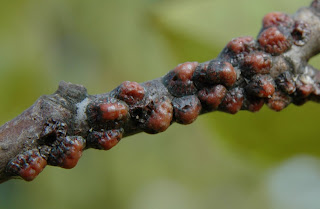
Magnolia scales on Star magnolia (notice the scale in the upper right corner has been chewed open by a beneficial insect–probably a lady beetle).
Holly infested with white prunicola scale. All photos provided by: Brian Kunkel, Ornamentals IPM Specialist, University of Delaware.
What’s Hot HL Issue 24
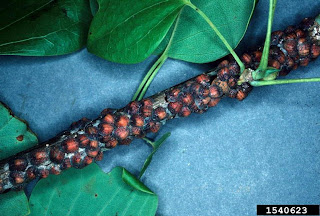
Tuliptree scale adults. Photo provided by: Lacy L. Hyche, Auburn University, Bugwood.org
European hornet damage. Photo provided by: John A. Weidhass, Virginia Polytechnic Institute and State University, Bugwood.org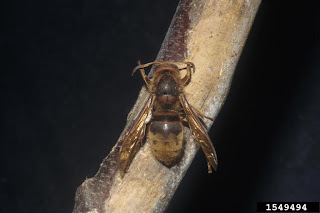
European hornet damage and adult. Photo provided by: Jim Baker, North Carolina State University, Bugwood.org
Oriental bittersweet foliage. Photo provided by: James H. Miller, USDA Forest Service, Bugwood.org
Oriental bittersweet berries. Photo provided by: Chris Evans, River to River CWMA, Bugwood.org
Multiflora rose infestation. Photo provided by: Nancy Fraley, USDI National Park Service, Bugwood.org
Close-up of multiflora rose plant. Photo provided by: Chris Evans, River to River CWMA, Bugwood.org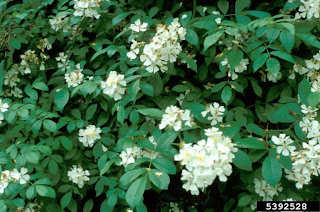
Mulitflora rose flowers. Photo provided by: John M. Randall, The Nature Conservancy, Bugwood.org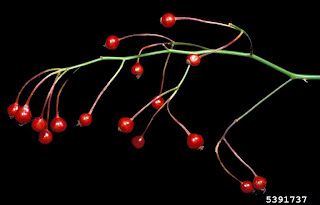
Multiflora rose berries. Photo provided by: Barry Rice, sarracenia.com, Bugwood.org
Insect Hotline Issue 21

Bees and wasps often visit magnolia or tuliptree scales during late summer early fall to feed on the honeydew. The presence of lots of bees and wasps around magnolia or tuliptrees may indicate an infestation close-by.
The ragged hole in one of the scales on the left has been tore open and killed by a beneficial insect, probably a lady beetle.
Cluster of magnolia scale.
Sooty mold growing on honeydew that had landed on trunk and branches.
A drop of honeydew dropping from a swollen female magnolia scale. All photos were taken by: Brian Kunkel, Ornamentals IPM Specialist, University of Delaware.





